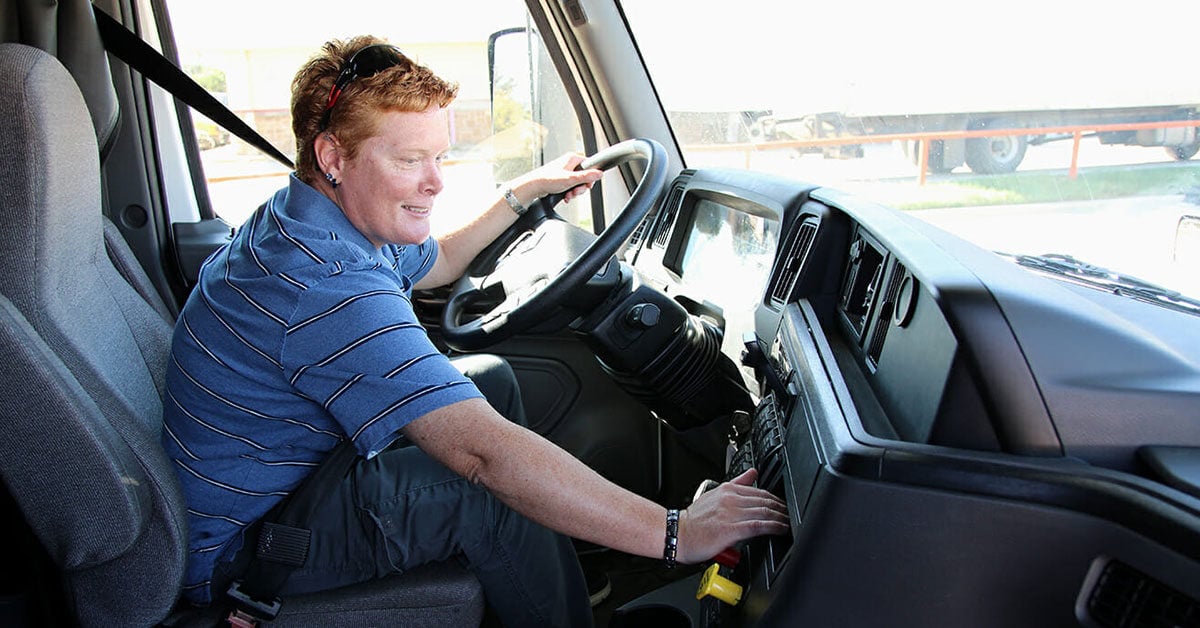 There’s little dispute that women are underrepresented in the skilled trades: according to a report issued by Global Industrial, women make up only 4% of trades workers in the U.S. The good news is that the number of women making careers in these disciplines—such as truck driving, construction, industrial maintenance, and other lines of work—is growing. According to the US Department of Labor, women’s participation in the skilled trades reached its highest level ever in 2021 (314,000), increasing by almost one-third in five years. But even with those gains, women still face unique challenges in the workforce, creating an opportunity for employers to strengthen and diversify their teams by investing in career training.
There’s little dispute that women are underrepresented in the skilled trades: according to a report issued by Global Industrial, women make up only 4% of trades workers in the U.S. The good news is that the number of women making careers in these disciplines—such as truck driving, construction, industrial maintenance, and other lines of work—is growing. According to the US Department of Labor, women’s participation in the skilled trades reached its highest level ever in 2021 (314,000), increasing by almost one-third in five years. But even with those gains, women still face unique challenges in the workforce, creating an opportunity for employers to strengthen and diversify their teams by investing in career training.
The challenges that women face in pursuing a career in skilled labor are similar to those in most other fields: the persistent wage gap between women and men, which contributes to women often needing a second job; the extra labor of caregiving and household management that disproportionately falls on women; and the biases they can face at work, whether it’s needing flexibility to take care of these personal obligations or the assumption that they are physically incapable of handling trades-based jobs.
While the gender wage gap is closing, it still remains an issue in the American workforce, with American women earning an average of 82 cents for every dollar earned by men. This gap can make it more difficult to make ends meet, which in turn forces many women to supplement their income with a second (or third!) job. According to S&P Global, there are approximately 4.6 million women in the U.S. who hold two or more jobs, versus 4.1 million men. And although women generally make less than men, household management, which includes housework and child or elder care, typically falls on the shoulders of women, regardless of marital status. This invisible overtime adds up: In the U.S., women spend about four hours a day on unpaid work, compared with approximately 2.5 hours for men. Further, women often face stigmas for taking time away from work or requesting flexible schedules to address these obligations.
These unique demands on women can make it difficult to get by in the workplace—never mind having the time and money it takes to advance their careers. The Russell Sage Foundation Journal of the Social Sciences found that 11% of women over twenty-five did not have a high school diploma; 29% ended their education with only a high school education; 28% had attended some college; and 20.4% received a bachelor’s degree. Lacking the proper education and training means it’s more likely for a woman to be passed over for promotions or other career advancement opportunities.
And yet, there is solid evidence that employers who understand the importance of employee training, whether provided as upskilling, reskilling, or other professional development programs, can have a profound impact on both employee retention and the employer’s bottom line. These benefits are particularly potent when companies make a meaningful effort to ensure the women of their workforce can participate in these initiatives.
So how do we know that prioritizing employee training pays off? Consider the numbers:
- Profit margin gain: Companies that focus on employee development and training see an average 24% gain in profit margins.
- Productivity gain: A Gallup poll found that “strengths-based” organizations—that is, those that focus on refining the strengths of its workers—improved employee productivity by 8% to 18%.
- Turnover reduction: DDI, a global leadership consulting firm, reported that women in particular are 5 times more likely than men to feel they have to leave their companies to advance their careers. Conversely, 76% of employees say they are more likely to stay in their job if their employer offers ongoing training opportunities.
And the benefits don’t stop there. According to Forbes Magazine, companies that dedicate resources to encourage the promotion and retention of women “increase their chances of successfully tapping women’s consumer spending power, now estimated at $20 trillion globally.” The same article also notes that companies with women executives are 30% more likely to outperform other competitors in their vertical. When it comes to investing in workplace training—and particularly when that training is designed to help women advance their careers—the positive ROI is clear.
For companies that rely upon their skilled labor workforce, expanding opportunities to increase the diversity of their teams involves identifying ways to make the trades more appealing to women. A great place to start is an apprenticeship program. Apprenticeships provide employees the chance to learn skills in a real-world setting while getting paid, a feature that distinguishes apprenticeships from learning in a trade school. This aspect—learning a skill without sacrificing wages—is particularly important for women, as touched on above. It’s also vital for employers to truly commit to building a workplace that is welcoming to women, which includes dismantling obvious and subtle ways in which sexism can create an environment in which women feel unsafe.
If apprenticeships do not fit into a company’s business plan, another path for employers is to retain a training vendor that offers employees the same kind of hands-on learning without impacting their income.
The corporate training landscape in America is crowded with options for employers, which can make it daunting to identify a vendor that can meet the unique needs of their workforce. At Ancora Training, for example, we offer dozens of programs across multiple industries that are designed to upskill, reskill, and otherwise help employees move closer to their career goals. We understand that each workplace is different, each employee is different, and developing effective training solutions requires us to keep both of these ideas in mind. Moreover, when it comes to women in the workforce, we’re not just talk: for two years in a row, Ancora has been recognized by Women in Trucking (WIT) as one of the Top Companies for Women to Work in Transportation.
We are passionate about education and the doors it can open for people of all genders, which is why we are proud to offer WIT members—and their immediate family—access to deeply discounted tuition for dozens of online certification and degree programs, as well as discounted tuition for Ancora High School, our 100% online high school diploma program.
Though workplace equality is still a ways off, there are multiple ways (and multiple reasons) for companies to push towards that goal, particularly when it comes to the female members of their teams. Investing in employee education and training pays dividends in both the short- and long-term; investing in the career development of the women of the workforce pays off even more.
 If you’re interested in learning more about how Ancora Training can help strengthen your workforce, you can contact me at natalie.williams@ancora.com, or visit us at AncoraTraining.com.
If you’re interested in learning more about how Ancora Training can help strengthen your workforce, you can contact me at natalie.williams@ancora.com, or visit us at AncoraTraining.com.
Natalie Williams is the Vice President of Ancora Training, and in 2024 was named by Women in Trucking as one of the Top Women to Watch in Transportation.
Like this kind of content?
As a member of the Wnbaz, stay on top of emerging trends and business issues impacting transportation and logistics; learn the importance of gender diversity in the workplace and the need for more women drivers; and see best practices in encouraging the employment of women in the trucking industry. Join today! Learn More













